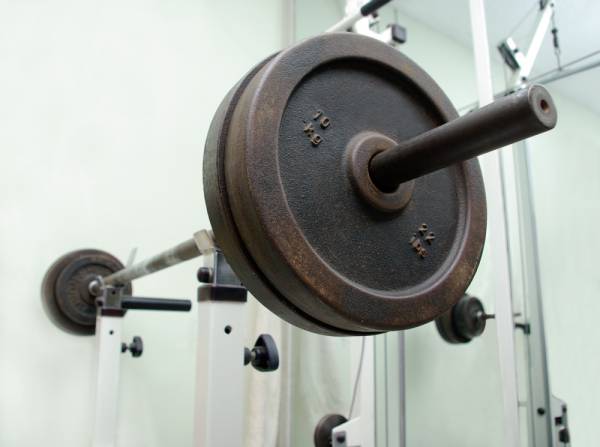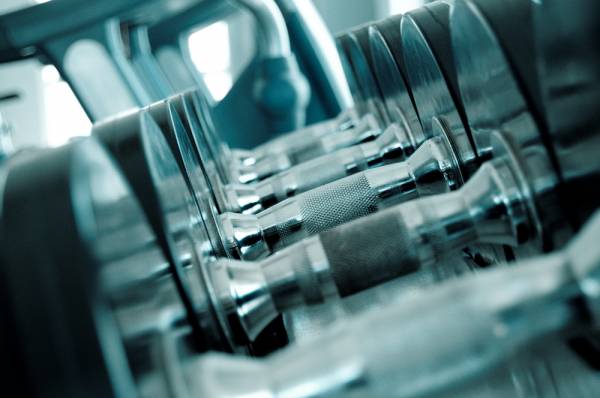Builders have all kinds of tools for the different types of jobs they need to do. They have tools to pour cement to lay foundations, tools to erect scaffolding, and tools to do the landscaping that gives a house it’s final finished look.
The gym, where we build our bodies, is no different. There are tools that are great for prehab, for laying the foundation of the work that is to come. There are tools for hypertrophy and strength, too. All of the tools serve a purpose and all work well if used for their intended purpose. Just as it makes no sense to complain that your hammer makes a bad screwdriver, it makes no sense to complain that your BOSU is a poor tool for maximal strength. That’s not what it was designed for.
When it comes to misuse of tools in the gym the kettlebell is probably right at the top of the list. I’ll be blunt – if you’re using kettlebells for triceps extensions, curls, or lateral raises you’re doing it wrong. And in the words of our illustrious editor, please, just stop now.
So what are kettlebells good for? And when do you use them?
Obviously kettlebells have a couple of things about them that allow certain exercises to do be done far better than any other tool. Their pendulum-like shape allows certain rhythmic exercises such as swings and snatches – the kettlebell ballistics – to be performed far better than if you were to choose a dumbbell or barbell. Chances are the first time you tried to swing a bar between your legs would be the only time!
There are also other potential benefits, too, such as the use of kettlebells during front squats. Many people lack the wrist flexibility to front squat with a bar effectively or painlessly. Kettlebells can be a good option for them to continue squatting without worrying about pain or damage to their wrists.
Kettlebells also add important feedback to exercises such as the get up. Because the weight sits on the back of the arm and changes the balance point of the lift, you get constant feedback about where your arm is. A weight such as a dumbbell that sits in the middle of your hand and right over the joint doesn’t give this same feedback. Personally I would much rather do heavy kettlebell get ups than try with the same weight with a dumbbell as I have far more feel with the kettlebell.
However, as much as I love kettlebells, I have to admit there are some drawbacks. Maximal strength training can become a real problem. With the biggest kettlebells weighing in at 48kg if your best lift in a particular exercise is greater than 48kg (or 96kg if lifting doubles) you’ll need to find something heavier.
This is where the bar comes in. If I’m in maximal strength mode there’s just nothing that can replace the bar, simply because I can get more weight on it. In my case I don’t need a bar for pressing or jerks because I still have kettlebells left in the range, but for deadlifts and even squats I need something heavier.
 The benefit of using the bar for deadlifts is obvious from the moment you first start using one. You can get more weight on there, you can keep the bar closer to the body and improving your leverage, and because the bar is “fixed” instead of two independent objects. you can lift more total weight. For squatting, being able to put the bar in a place that allows it to be supported by your skeleton allows you to use more weight and load the legs more.
The benefit of using the bar for deadlifts is obvious from the moment you first start using one. You can get more weight on there, you can keep the bar closer to the body and improving your leverage, and because the bar is “fixed” instead of two independent objects. you can lift more total weight. For squatting, being able to put the bar in a place that allows it to be supported by your skeleton allows you to use more weight and load the legs more.
So what to use when?
Let’s say a new client walks into my gym, wants to train and, like many, he/she can’t squat. Do I need maximal strength at this point? The answer is no. What we need at this point is a tool that allows me to teach a fundamental pattern and gives him/her some feedback about how to hold the body. The kettlebell goblet squat is a great choice here. Not only can I use the exercise to teach how to squat safely, we can use it to add an extra degree of mobility work, as the slight load will help the client sink into a deeper position. In addition the goblet squat teaches an erect spine, which has many other carry over benefits to the rest of life, and we’ll need that skill when we eventually add more load.
After regaining the client’s squat pattern now we need to add load. I would go from here to double-kettlebell front squats, as it is a natural progression. These are easier on the wrists, require no extra tools or teaching, other than teaching the double clean, and a moderate weight is exponentially harder than the same weight on a bar, which means less stress on the spine. Donnie Thompson, a man with one of the highest totals in powerlifting history, does sets of ten reps with double 40kg bells as assistance work to build his 1000lb squat. The rest of us can gain great benefit from 16-24kgs.
 At this point, if we’re still looking to get stronger we’ll need the bar. Not because we’ve run out of weight, but because after a certain point the kettlebell squat becomes more upper body (and may be the best upper body mass builder I can find) and less leg dominant. For a grappler I would question ever using the bar, as the kettlebell front squat may be a more useful tool. But if we want maximal strength we need maximal load on the legs and the bar is the best tool for the job.
At this point, if we’re still looking to get stronger we’ll need the bar. Not because we’ve run out of weight, but because after a certain point the kettlebell squat becomes more upper body (and may be the best upper body mass builder I can find) and less leg dominant. For a grappler I would question ever using the bar, as the kettlebell front squat may be a more useful tool. But if we want maximal strength we need maximal load on the legs and the bar is the best tool for the job.
You don’t see builders refuse to use a tool saying, “I’m a hammer guy” in the same way that you see people say, “I’m a kettlebell guy.” How about being a results driven guy instead and picking the right tool for the job? This is exactly why I’ve started running our Integrated Strength Coaching workshops – to get rid of the cloud of misunderstanding around the various tools of our job. All the tools work well when used in the right circumstances. You just need to be educated enough to pick the right one for the right time.






